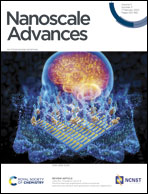A hierarchical integrated 3D carbon electrode derived from gingko leaves via hydrothermal carbonization of H3PO4 for high-performance supercapacitors†
Abstract
Electrochemical ultracapacitors derived from green and sustainable materials could demonstrate superior energy output and an ultra-long cycle life owing to large accessible surface area and obviously shortened ion diffusion pathways. Herein, we have established an efficient strategy to fabricate porous carbon (GLAC) from sustainable gingko leaf precursors by a facile hydrothermal activation of H3PO4 and low-cost pyrolysis. In this way, GLAC with a hierarchically porous structure exhibits extraordinary adaptability toward a high energy/power supercapacitor (∼709 F g−1 at 1 A g−1) in an aqueous electrolyte (1 M KOH). Notably, the GLAC-2-based supercapacitor displays an ultra-high stability of ∼98.24% even after 10 000 cycles (10 A g−1) and an impressive energy density as large as ∼71 W h kg−1 at a power density of 1.2 kW kg−1. The results provide new insights that the facile synthetic procedure coupled with the excellent performance contributes to great potential for future application in the electrochemical energy storage field.

- This article is part of the themed collections: 2024 Lunar New Year Collection and Celebrating Nanoscience in China


 Please wait while we load your content...
Please wait while we load your content...